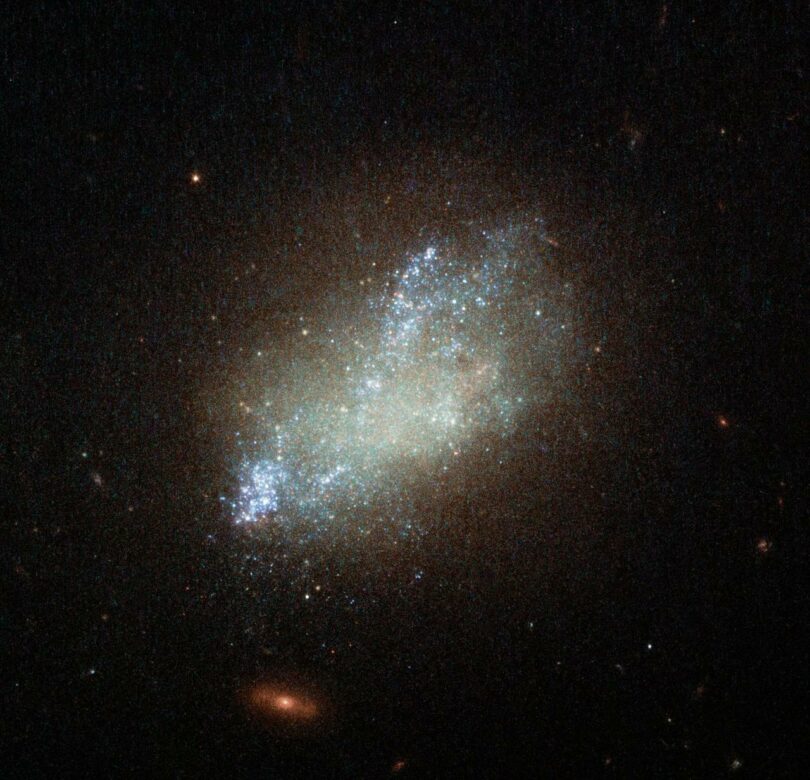The Leo constellation is an exciting topic for us to explore, especially for young astronomers.
Occupying an area of 947 square degrees in the night sky, Leo is renowned for its prominence and is easily recognizable due to its shape that resembles a lion.
It ranks as the 12th largest constellation in size and can be seen in both the northern and southern hemispheres, specifically at latitudes between +90 and -65 degrees.
When we look up at the night sky, Leo provides not just a vision of stars but also a rich history. Known as one of the zodiac constellations, it lies between Cancer and Virgo and is part of the path that the Earth orbits within.
We can see Leo chasing the horizon from late winter to spring, with its main stars forming what we see as a backward question mark or a sickle, which outlines the lion’s mane.
Discovering Leo: The Basics
In this section, we’ll uncover the essentials about the Leo Constellation, a prominent member of the Zodiac family. We’ll explore its placement in the night sky and delve into its rich history that dates back to ancient civilizations.
Location in the Sky
Leo constellation is situated in the Northern Hemisphere and is easy to spot due to its distinctive lion shape, which is fitting since “Leo” is Latin for lion. Here’s how we can find it:
- Right Ascension: Approximately 10 hours
- Declination: Between +5 and +30 degrees
- Zodiac Position: To the east of Cancer and to the west of Virgo
Using the ‘Sickle’ shape, which is part of the Leo constellation, as a reference point can assist us in pinpointing this constellation’s exact location.
Historical Significance
Throughout history, the Leo constellation has had great importance:
- Babylonia: Leo was known as “Ur.gu.la” (the great lion) to the Babylonians, who saw the constellation as a lion chasing its prey.
- Greek Mythology: In Greek stories, Leo was associated with the Nemean Lion, which was slain by Hercules as one of his twelve labors.
- Egyptians: For the Egyptians, the sighting of Leo coincided with the annual flooding of the Nile River, marking it as a significant time of year.
Mesopotamians are also known to have recognized the constellation Leo, illustrating its longstanding significance in human observations of the stars.
The Brightest Stars of Leo
The constellation Leo boasts some of the night sky’s most luminous stars, forming the iconic Sickle asterism. As we explore further, we’ll highlight the most brilliant stars that make up Leo’s celestial shape.
Regulus: The Heart of the Lion
Regulus, also known as Alpha Leonis, shines as the brightest star in Leo with an apparent magnitude of 1.35. This magnificent star is a multi-star system, but its primary component is a blue-white main-sequence star that dominates the system’s brightness. Regulus is positioned at the base of the sickle, marking the heart of the mythological lion.
Other Notable Stars
In the realm of Leo, several stars stand out due to their brightness and significance:
- Denebola or Beta Leonis, is the second brightest star in Leo with a magnitude of 2.14. It represents the lion’s tail and is known for its rapid rotation.
- Algieba, also known as Gamma Leonis, is a double star system where both stars can be distinguished with a small telescope. This star system, with an overall apparent magnitude of around 2.0, is important to astronomers for its beautifully contrasting golden and greenish hues.
- Zosma, or Delta Leonis, is a main star in the Sickle with a magnitude of 2.56, contributing to the lion’s hip.
- Chertan, located in Leo as Theta Leonis, has a magnitude of 3.33 and is part of the constellation’s hind leg.
Leo’s distinct Sickle asterism, featuring stars like Regulus and Zosma, is easy to recognize and is a focal point of interest for astronomers and stargazers alike.
Cosmic Neighborhood
The Leo constellation is nestled among many other constellations and is home to several deep-space objects that fascinate astronomers and stargazers alike.
We will explore its adjacent constellations and some of the key deep-space objects within its borders.
Adjacent Constellations
Leo has a number of constellations that lie along its borders, forming its cosmic neighborhood:
- North: Ursa Major and Leo Minor
- East: Coma Berenices
- South: Crater, Sextans, and Hydra
- West: Cancer and Lynx
This diverse arrangement of celestial neighbors adds context to Leo’s position in the sky and creates a mosaic of stellar stories and mythologies.
Deep-Space Objects
Within Leo, there are a multitude of fascinating deep-space objects:
- Galaxies: Leo contains several well-known galaxies, including Messier 65, Messier 66, Messier 95, and Messier 96.
- Leo Triplet: This group of galaxies, which includes Messier 65 and Messier 66, along with NGC 3628, is a stunning feature.
- Leo Ring: An immense cloud of hydrogen gas, orbiting two galaxies within Leo at a distance of light-years.
These galactic features offer us not just beauty, but also insights into the workings of the universe.
Leo’s Role in Astronomy and Culture
In the realm of astronomy, we often reference Leo as one of the most recognized constellations, not just due to its prominence in the night sky, but also for its historical and cultural significance.
The constellation is associated with the Nemean lion from Greek mythology, a creature defeated by Hercules during one of his twelve labors. This mythological background provides Leo with a rich narrative that has been passed down through generations.
In astrology, Leo is the fifth astrological sign of the zodiac, represented by the symbol of the lion.
This sign is said to rule over creativity and drama, with an emphasis on the enthusiasm and courage akin to the animal it’s named for.
Astrologers often describe those born under the sign of Leo as being loyal, passionate, and affectionate.
Here’s a brief breakdown of Leo’s astronomical highlights:
- Meteor Showers: The Leonids, originating from comet Tempel-Tuttle, are associated with the Leo constellation. They are so named because their radiant point, or the point in the sky from where they appear to come from, is located in this constellation.
- Comet Tempel-Tuttle: It’s the parent comet of the Leonids meteor shower and completes an orbit around the sun approximately every 33 years.
- Recognized Features: Not only does Leo feature the famous Leonids, but it also houses several notable astronomical objects, such as the galaxies in the Leo Triplet and numerous bright stars like Regulus.
By understanding Leo’s role in both astronomy and culture, we gain a greater appreciation for how the stars have shaped our history and continue to inspire us today. Whether we’re looking to the stars for scientific discovery or seeking connection with our ancient past, Leo serves as a powerful symbol in our celestial tapestry.
Frequently Asked Questions
In this section, we’ll cover some of the most common questions about the Leo constellation, focusing on its size, stellar composition, visibility throughout the year, historical background, distance from Earth, and unique celestial features.
How can you describe the size of the Leo constellation in comparison to other constellations?
Leo is a relatively large constellation, ranking 12th in size among the 88 modern constellations. When we look at the night sky, it takes up a significant area, making it relatively easier to spot, especially when compared to smaller and less conspicuous constellations.
What are the significant stars that form the Leo constellation?
The most notable stars in the constellation of Leo include Regulus, also known as Alpha Leonis, which is the brightest star in the constellation, and Algieba (Gamma Leonis), a binary star. Denebola (Beta Leonis) and Zosma (Delta Leonis) are other prominent stars that contribute to Leo’s distinctive shape.
When is the best time of year to observe the Leo constellation in the night sky?
Leo constellation is best observed in the Northern Hemisphere during the spring months, particularly from February to May. During this time, it is situated high in the sky in the evening, making it an ideal period for stargazing.
What is the historical significance behind the name of the Leo constellation?
The constellation of Leo has been associated with the lion for millennia, with civilizations such as the ancient Babylonians, Greeks, and Romans all identifying this pattern of stars with the king of beasts. Such recognition is believed to be due to the constellation’s resemblance to a lion and its historical placement during the peak of the summer heat, representing a lion’s strength and majesty.
How far away is the Leo constellation from our planet Earth?
Distances to stars within the Leo constellation vary significantly. Regulus is around 79 light-years from Earth, making it one of the closer bright stars to our solar system. Other stars within Leo can be hundreds of light-years away, emphasizing the vastness of our galaxy.
What unique celestial objects, such as nebulae or planets, can be found in the Leo constellation?
Within the Leo constellation, there are several intriguing deep-sky objects, such as galaxies forming the Leo Triplet and the Leo Ring. Additionally, there have been exoplanets discovered orbiting some of the constellation’s stars, contributing to our understanding of planetary systems beyond our own.


